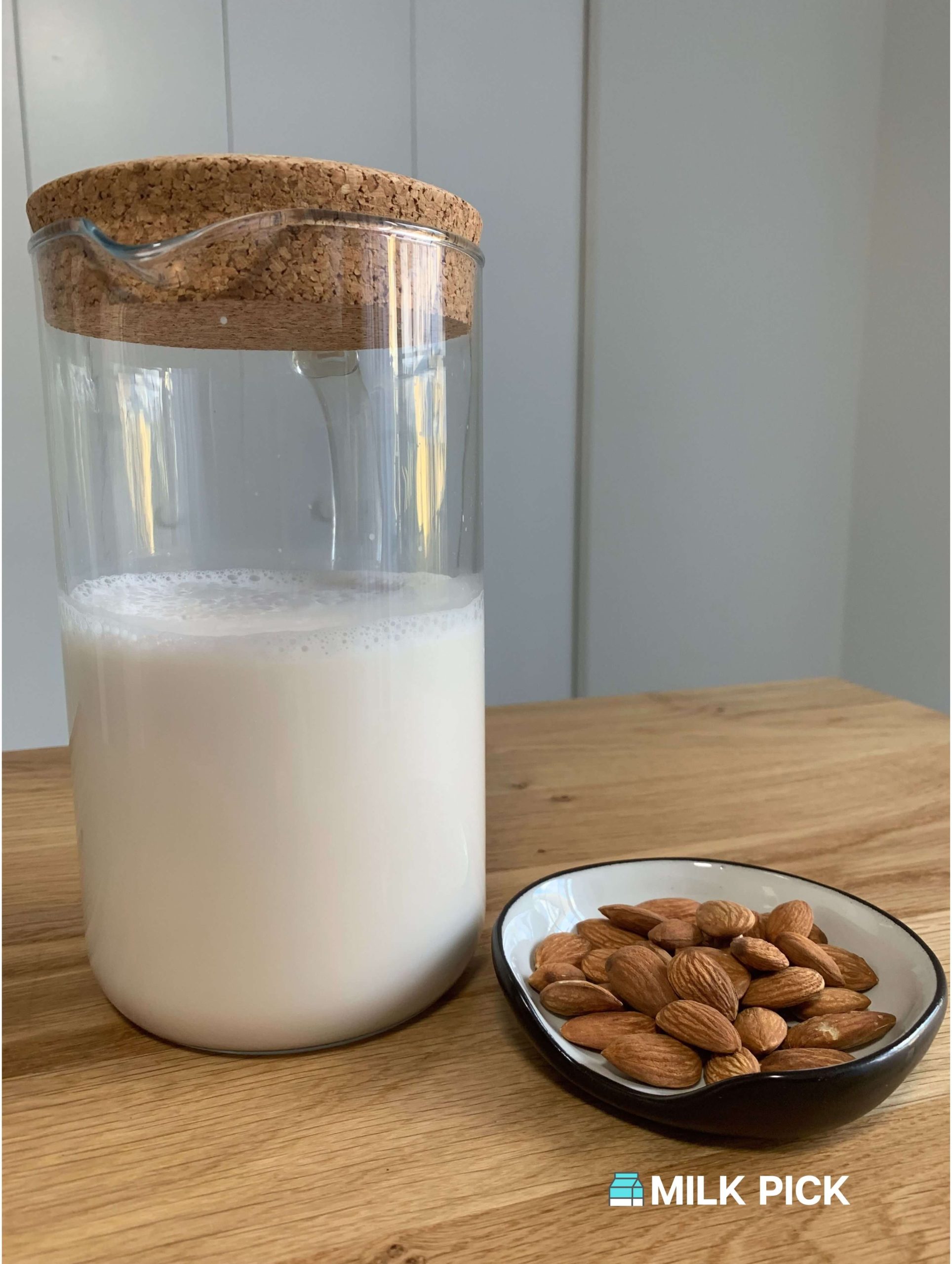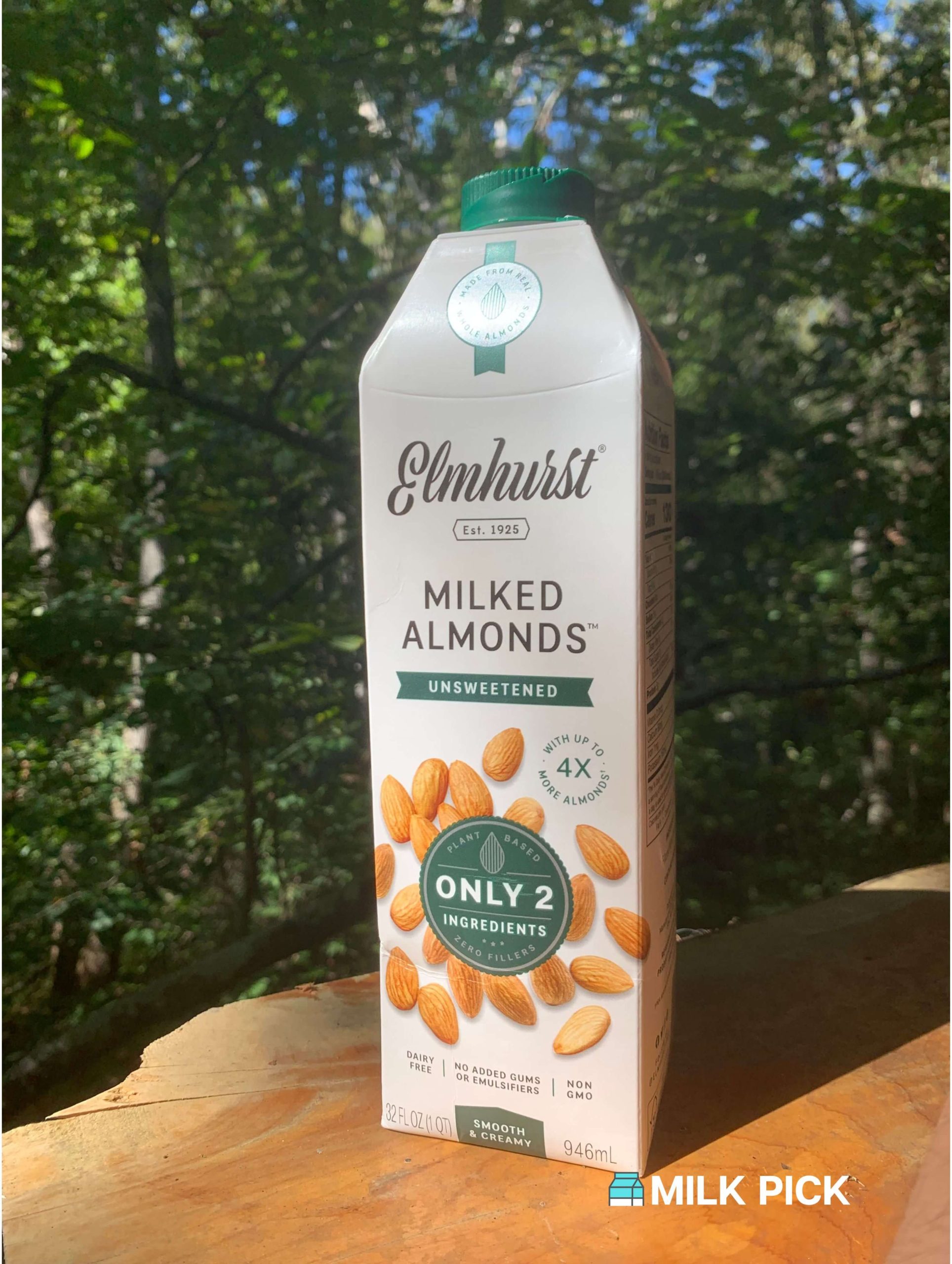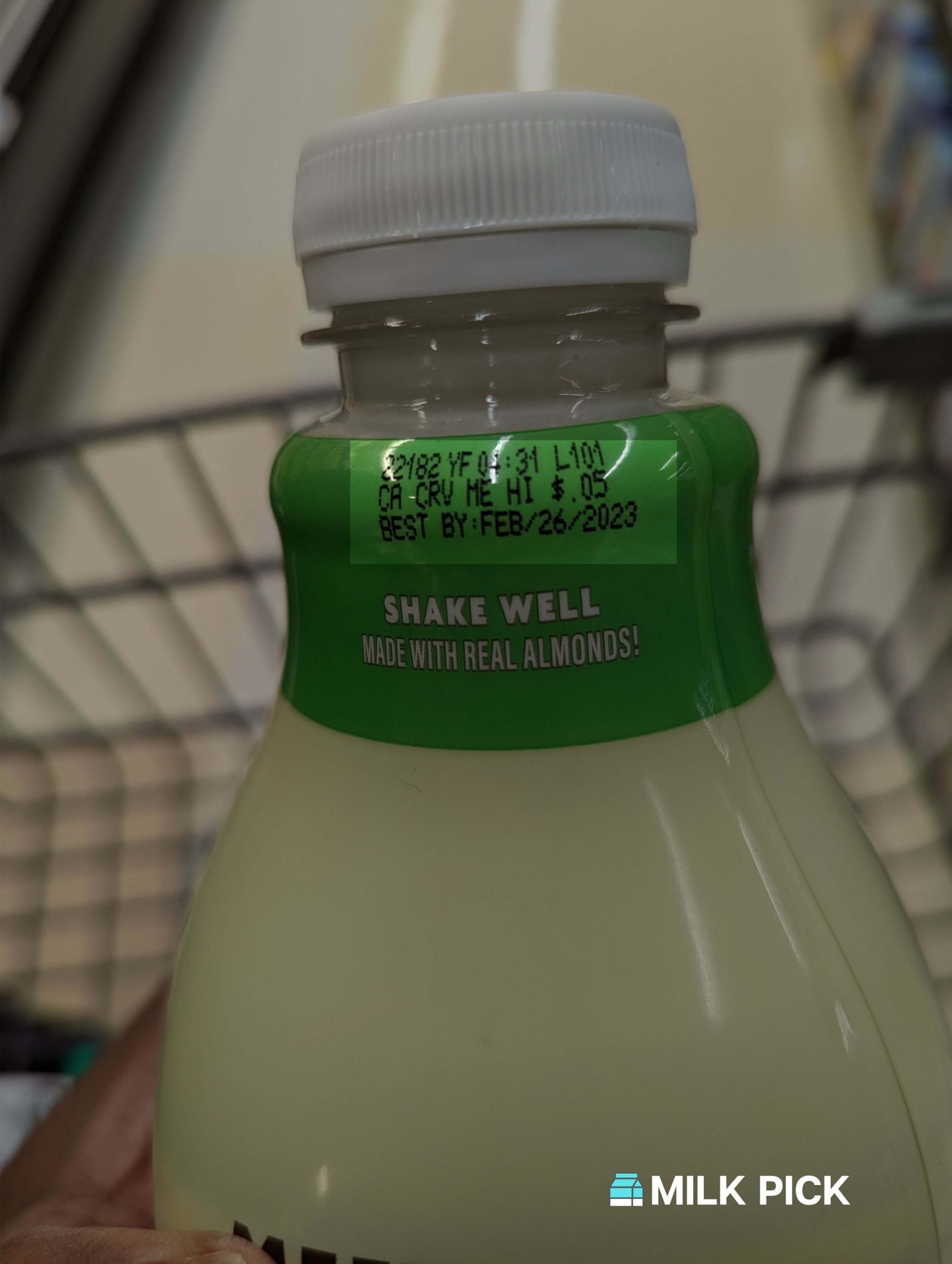Almond milk is one of the most popular plant-based milk in the world.
While it works wonderfully as a substitute for cow’s milk for people who need or prefer a dairy alternative, almond milk composition requires slightly different refrigeration and storage from its dairy counterpart.
With all the almond milk brands available on the market, it can be challenging to understand when to refrigerate almond milk and how long it may last in your fridge.
Explore our guide to learn the differences between homemade, refrigerated, and shelf-stable almond milk and get answers to commonly asked questions about refrigerating your favorite plant-based milk.
Quick Answer
Does almond milk need to be refrigerated?
Yes, once opened, all almond milk must be refrigerated. Refrigeration slows the growth of bacteria and mold that can cause almond milk to go bad. Mold produces mycotoxins, which can cause acute food poisoning if ingested. The World Health Organization advises consumers to store foods properly and not keep foods for extended periods of time to avoid mycotoxin exposure.
Understanding Almond Milk Types
When choosing almond milk, you generally have 3 basic options:
- Homemade almond milk
- Refrigerated almond milk
- Shelf-stable almond milk
Understanding the basic differences between these types can help you know whether to refrigerate your product and how long it’s good for.
Homemade Almond Milk
Homemade almond milk is almond milk you make yourself at home. Some people make it with a pre-made almond milk base like JOI, while others blend raw almonds, then blend them together with water.
Homemade almond milk is the freshest, most additive-free option, but it also lasts the shortest amount of time.
Homemade almond milk must stay refrigerated and lasts about 3 to 5 days.

Refrigerated Store-Bought Almond Milk
Refrigerated store-bought almond milk is the type of almond milk you buy at the grocery store or online created by almond milk manufacturers.
These products may or may not contain additives that help them last longer than homemade almond milk.
They must stay refrigerated to remain safe to drink and last slightly longer than homemade almond milk in the fridge, about 7 to 10 days, depending on the manufacturer.

Shelf-Stable Almond Milk
Shelf-stable almond milk is almond milk that lasts several months to a year without refrigeration if stored in a cool, dry place.
It is packaged in sterile containers under aseptic conditions, then hermetically sealed to keep out bacteria or other microorganisms.
Once opened, shelf-stable almond milk must be refrigerated and is good for about 7 to 10 days.

Helpful FAQs About Refrigerating Almond Milk
What’s the Shelf Life of Almond Milk?
The shelf life of almond milk depends on the type of almond milk it is. It also depends on the manufacturer and the process they use to make it.
In general, almond milk must be refrigerated once opened and will last:
- 7 to 10 days for refrigerated store-bought and opened shelf-stable products
- 5 days for homemade almond milk
- Up to the manufacturer’s expiration date (several months to a year) for unopened shelf-stable almond milk
Refrigerated and shelf-stable almond milk lasts longer because of the pasteurization process they undergo before packaging.
Many refrigerated almond milk brands, such as Malk Organics, use an ESL (Extended Shelf-Life) process to extend the products’ shelf life to more than 30 days.
ESL differs from the traditional high-temperature, short-time HTST, and ultra-high-temperature (UHT) processes, which make the product safe but can destroy its natural organoleptic (texture, taste, color) characteristics.
However, shelf-stable almond milk, like Elmhurst 1925, must use UHT to create a long-lasting product that doesn't require refrigeration until opened.
This almond milk brand lasts up to six months without opening, giving it an extended shelf-life.
How Do I Know How Long To Keep My Almond Milk?
The best way to know how long you can keep your almond milk before throwing it away is to check the manufacturer’s directions.
The carton should contain instructions, such as “refrigerate after opening,” and will often say something like “enjoy within 7 to 10 days”.
You can also look at the Sell By or Expiration dates printed on the carton.

Never use the product past its expiration date, as this is the date the manufacturer has determined the product may start to go bad.
For example, even if you have unopened shelf-stable almond milk, you will have to throw it out if it goes past the expiration date.
Do I Need To Throw Out My Almond Milk After the “Use By Date”?
Not necessarily. The "Use By" or "Best By" date indicates the date by which the almond milk may lose some of its peak quality characteristics, like texture, taste, or nutritional benefits.
However, this doesn’t mean it is unsafe to drink.

While it's good practice to exercise caution regarding your almond milk after the Use By date, you can continue using it if it doesn’t show signs of going bad.
When Should You Refrigerate Almond Milk
You should refrigerate homemade and refrigerated store-bought almond milk as soon as possible and shelf-stable almond milk immediately after opening.
The product will go bad faster in warm conditions because the heat supports bacterial and mold growth.
So, for instance, you never want to leave almond milk in a hot car or warm kitchen above 90℉ for more than one hour after use.
How Long Can Almond Milk Sit Out Before Being Refrigerated?
At an average room temperature of about 68℉ to 75℉, almond milk can sit out for about 2 hours before you need to throw it away.
After this time, pathogen growth accelerates, and you’d want to get rid of the almond milk that has sat out too long.
Often this occurs when people accidentally leave almond milk in the car after buying it at the store.
It can also happen when receiving a shipment of almond milk from an online vendor that isn’t packaged correctly or after using it in cooking and forgetting to put it away.
While you should follow the 2-hour rule, you may use common sense to determine if you need to throw it away, depending on the circumstances.
For example, if you leave almond milk in the car for 3 hours but your car is outside, and it’s 24℉, you’d likely be fine since the almond milk was at a low temperature.
Alternatively, leaving almond milk out of the fridge in a warm kitchen for 3 hours when baking would likely mean you need to dispose of the carton.

How Can You Make Almond Milk Last Longer?
Proper storage can help you extend the shelf-life of your almond milk as long as possible.
This includes refrigerating the product as directed on the carton and at the property temperature.
Almond milk should be kept below 40℉ per the FDA’s food safety recommendations.
It’s helpful to check your refrigerator’s temperature to ensure it keeps your almond milk at the right temperature.
In addition to temperature, you can extend the shelf-life of almond milk by:
- Keeping homemade almond milk in a clean, glass container with an air-tight seal
- Inspecting the almond milk carton to ensure it doesn’t have damage like punctures or tears
- Storing the carton in the back of the fridge instead of on the door where the temperature fluctuates
- Never drinking directly from the carton, as this introduces additional bacteria into the product

How Can You Tell if Almond Milk Has Gone Bad?
Almond milk can go bad just like dairy milk; however, the signs of spoilage differ.
When dairy milk spoils, it begins to curdle and produces a sour smell. This is due to the lactic acid formed when bacteria break down the sugars in lactose (a sugar in cow’s milk).
Almond milk doesn’t contain lactose (which is why it’s excellent for people with lactose intolerance), so it may not have the same tell-tale spoilage signs as dairy milk.
You’ll want to look for a few different signs when determining if your almond milk has gone bad.
You may see actual spoilage caused by bacteria or mold or quality changes in taste, texture, or appearance.
The following can indicate spoiled almond milk that you’ll want to throw away:
- A swollen, puffy, or expanded container
- Black mold spots in the almond milk
- Thick, chunky, or clumpy almond milk (sometimes almond milk may separate and just needs to be shaken, so look for other signs to confirm it’s bad)
- A sour or otherwise unappealing smell (fresh almond milk should smell slightly sweet and nutty)
- An “off” taste (you can take a small sip to check for sourness or unpleasant taste)
Drinking bad almond milk can give you common symptoms of food poisoning, such as nausea, fever, diarrhea, and vomiting, so throw it away when you doubt the almond milk’s freshness.
Related: Does Almond Milk Go Bad?
Enjoy Your Almond Milk Safely
A good general rule to follow is that an opened container of almond milk should stay refrigerated and can remain in the fridge for about 7 to 10 days.
You don’t necessarily have to throw it away after this time, but it's a good idea to keep an eye on the product to look for signs of spoilage, such as curdling, mold, or a foul smell.
If you notice any changes, throw the almond milk out right away.
